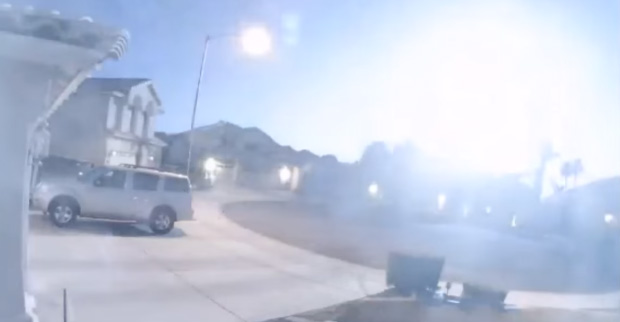At about 4am local time on Friday, a small asteroid exploded over Arizona and lit up the sky. The explosion was caused by the space rock striking the Earth's atmosphere. The asteroid was travelling at about 64,700 kilometres an hour (40,200 mph) when it burst. The brilliant explosion was about 10 times brighter than a full moon. It briefly blinded NASA's cameras, which were "almost completely saturated by the bright event," said Bill Cooke of NASA's Meteoroid Environment Office.
Thank you, atmosphere!
The atmosphere is a magnificent thing. It's full of the oxygen that we breathe, the clouds that bring rain, and an array of fascinating light shows from sunsets and rainbows to lightning and aurora borealis. It's also a pretty incredible roof.
Our atmosphere shields us from all kinds of stuff. Gamma rays, x-rays, and ultraviolet radiation are all things flying through space that can cause serious burns and sickness. But thankfully, the gases in our atmosphere absorb them. Then there are the "rocks". Space is full of tiny pieces of rocks and debris — NASA estimates that around 100 tons of it hits Earth every single day. So why isn't raining high-speed cosmic dust?

At sunrise, there were smoke trails left behind in the sky from the explosion. (Mike Lerch/Spaceweather.com)
Because the atmosphere burns them up as soon as they hit it. They never have a chance to hit the ground (or even get that far at all — this recent asteroid exploded about 90 kilometres, or 55 miles, above the ground). These explosions are caused by a combination of super-supersonic speeds and the gases in the atmosphere. These gases rub against the surface of the asteroid causing extreme friction (think of the heat made when you rub your hands together really hard and fast, then times that by a million).
Totally safe
Despite the protection of our atmosphere, all those pieces of rock up there make some people nervous. Just how close was this asteroid to being a concern? NASA estimates that the Arizona asteroid was about 1 to 2 metres (10 feet) wide. Asteroids need to be a lot larger — at least 25 metres (82 feet) wide — to make it through the atmosphere and cause any damage. Even then it would only be fairly minor local damage. In other words, you can sleep soundly and enjoy the fireworks! Check it out...
 The brightest moment of an asteroid explosion that lit up Arizona skies early Friday morning. (Screenshot courtesy of Joe Wright/YouTube)
The brightest moment of an asteroid explosion that lit up Arizona skies early Friday morning. (Screenshot courtesy of Joe Wright/YouTube)










OMG! 😮 😮 😮 😮 😮
OMG + OMG! 😆
😯 😯 😯 😯